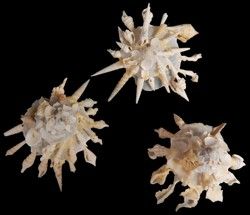A 4" Carrier Shell
One carrier shell (Pallid Carrier) measuring approximately 4 inches
Orders usually process within 2 to 5 business days.
Make Your Selections and Shipping Preference. We Will Email You the amount of the Shipping Cost. When you receive the shipping cost go back into shells-of-aquarius.company and click into Purchase Shipping Label. There you will find UPS or USPS. Click into the option you decided on and make your payment. Your order will ship when shipping payment is received.
Email: ja1@mindspring.com
Xenophora pallidula are species of the sea snail, a marine gastropod mollusk in the family Xenophoridae, the carrier shells.
Xenophora pallidula, also known as the Pallid Carrier Shells, are relatively small, averaging about 2 1/2 to 3 inches in length and 2 3/4 to 3 1/4 inches in width. These snails have a light appearance, usually white or off-white in color. They get their name from the Latin word, Xenophoridae which means “foreign carrying”. These species will attach objects like coral skeletons, fragmented shells, and other debris to the dorsal side of their shell. These attachments often create a radial pattern around the whorls. While this is common among the species in this family, the Xenophora pallidula are known to cover more of their shell than other species in the family, with over half their shell hidden. And as the organism grows, there will be more and larger foreign material attached. This is not energetically favorable as the snails secrete mucus, which acts as a glue to hold the material in position. Yet the layout of the shell is a source of protection in various ways. This unique shell makes it harder to put into a predator's mouth and swallow. Additionally, due to the type of objects glued to the shell, it serves as a method of camouflage as they lay within the sea floor debris. A spire is also attached to the shell of the snails which adds to its intricacy. Most have a fairly high spire, with a spire angle ranging between 65 and 92 degrees.
(REF: Xenophora pallidula (Reeve, 1842). WoRMS (2010). Xenophora (Xenophora) pallidula (Reeve, 1842). Accessed through: World Register of Marine Species) (REF: Bijoy Nandan, S.; Priyaja, P.; Jayachandran, P.R. (2020). Frontiers in Benthic Science. Kochi, India: Directorate of Public Relations and Publications. ) (REF: Prem Anand, T.; Deepak Samuel, V.; Patterson Edward, J.K. (2001). "Gastropod shells attach to the surface of Xenophora pallidula (Gastropoda, Prosobranchia)")
Xenophora pallidula are found in tropical areas across the Indo-Pacific ocean area. They are also found in or near Australia, India, Nicobar Islands, Indonesia, Japan, Philippines and some have been found near South Africa. In these areas, the Xenophora pallidula dwell in shallower waters of the benthic zone. They are commonly found at depths of 656 feet to 1870 feet some have been found in depths of 3150 feet.
The benthic region of the ocean begins at the shore line (intertidal or littoral zone) and extends downward along the surface of the continental shelf out to sea. Thus, the region incorporates a great variety of physical conditions differing in: depth, light penetration and pressure. The continental shelf is a gently sloping benthic region that extends away from the land mass. At the continental shelf edge, usually about 660 feet deep, the gradient greatly increases and is known as the continental slope. The continental slope drops down to the deep sea floor. The deep-sea floor is called the abyssal plain and is usually about 13,000 feet deep. The ocean floor is not all flat but has submarine ridges and deep ocean trenches known as the hadal zone.
(REF: Walag, Angelo (2022). "Understanding the world of Benthos: an introduction to Benthology". In Godson, Prince; et al. (eds.). Ecology and Biodiversity of Benthos. Amsterdam, Netherlands: Elsevier)(REF: Xenophora pallidula (Reeve, 1842). WoRMS (2010). Xenophora (Xenophora) pallidula (Reeve, 1842). Accessed through: World Register of Marine Species ) (REF: Bijoy Nandan, S.; Priyaja, P.; Jayachandran, P.R. (2020). Frontiers in Benthic Science. Kochi, India: Directorate of Public Relations and Publications ) (REF:"Xenophora pallidula, Pallid carrier-shell". www.sealifebase.ca. )
The Pallid Carrier shells are grazers that feed upon detritus from the sea floor. The snails mobility enables them to acquire food. These Carrier shells reproduce sexually and externally but are not hermaphroditic. Instead they have individuals that identify with a distinct sex and have specific reproduction organs for the entirety of their lifespan. Once reproduction has begun, embryos develop into planktonic trochophore, which is a young larvae and then into the final larval stage before becoming fully grown adult carrier shells
detritus is loose material (such as rock fragments or organic particles) that results directly from disintegration.
hermaphroditic possessing both male and female reproductive organs, structures, or tissue.
(REF: www.merriam-webster.com )
(REF: Xenophora pallidula, Pallid carrier-shell" www.sealifebase.ca) (REF: Xenophora pallidula". www.mindat.org. Hudson Institute of Mineralogy. 1993)
